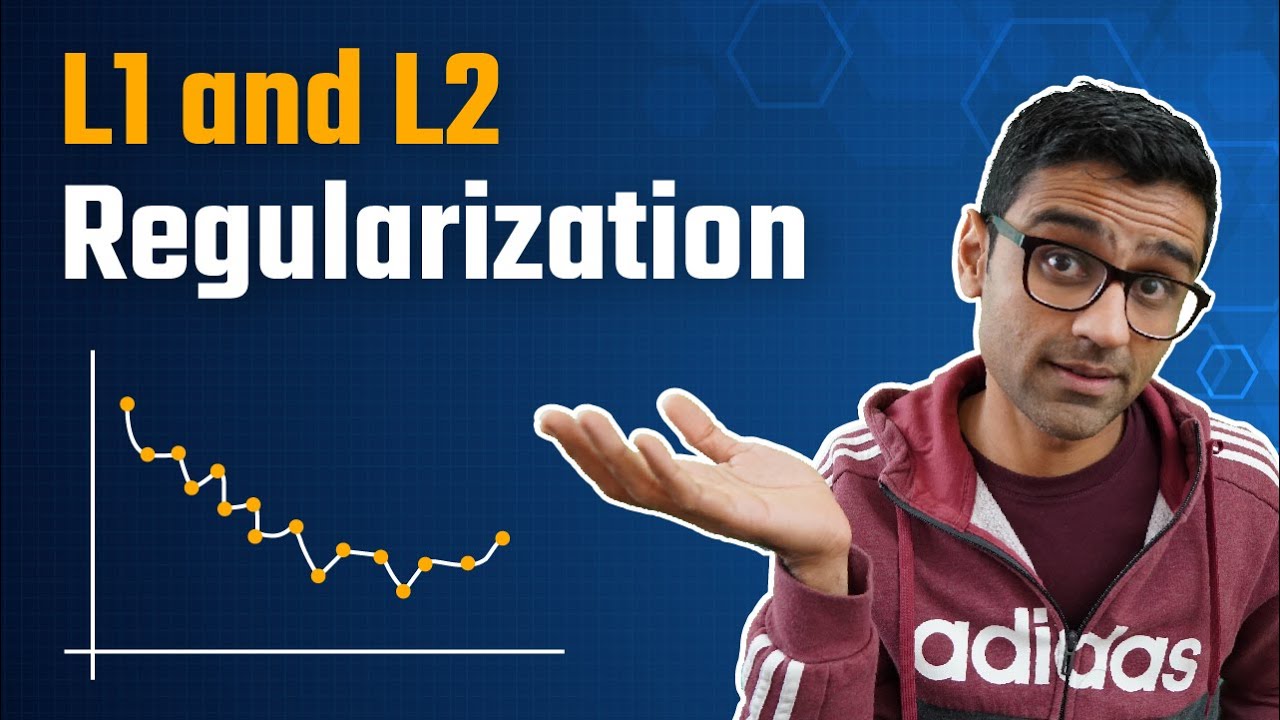Regulaziation in Machine Learning | L1 and L2 Regularization | Data Science | Edureka
Summary
TLDRThis video delves into regularization techniques in machine learning, particularly focusing on Ridge (L2) and Lasso (L1) regression. It highlights the necessity of regularization to prevent overfitting, illustrated through examples like house price prediction and pluralization rules. The presenter demonstrates how both techniques modify the cost function to enhance model performance, with Lasso also performing feature selection by reducing some coefficients to zero. Practical implementation using Python shows the accuracy differences between linear regression, Ridge, and Lasso, emphasizing the importance of these methods in improving model generalization for complex datasets.
Takeaways
- 😀 Regularization techniques like Ridge and Lasso help in reducing overfitting in regression models.
- 📊 Linear Regression serves as a baseline model for comparison with regularization techniques.
- 🔍 Ridge Regression applies L2 regularization, penalizing large coefficients to improve model accuracy.
- 🛠️ Lasso Regression applies L1 regularization, which can lead to feature selection by shrinking some coefficients to zero.
- 📈 Training scores can be lower in models with regularization due to fewer features being used.
- 📉 The speaker notes a training score of 78% and a testing score of 82% when using Lasso Regression.
- 🧩 Simple datasets may not show significant improvements when using Ridge or Lasso compared to Linear Regression.
- 🌐 In complex datasets with numerous features, Ridge and Lasso techniques can lead to higher accuracy and better results.
- 💡 The comparison highlights the importance of choosing the right regression technique based on data complexity.
- 👍 Viewers are encouraged to engage with the content by liking, commenting, and subscribing for more educational videos.
Q & A
What is the primary purpose of regularization in machine learning?
-Regularization aims to prevent overfitting by adding a penalty to the model's complexity, helping it generalize better to unseen data.
What are the two main types of regularization discussed in the video?
-The two main types are L1 regularization (Lasso) and L2 regularization (Ridge).
How does Lasso regularization differ from Ridge regularization?
-Lasso regularization adds a penalty based on the absolute value of the coefficients, potentially reducing some coefficients to zero, thus performing feature selection. Ridge regularization adds a penalty based on the square of the coefficients, which keeps all features but reduces their influence.
What was the context of the burger analogy used in the video?
-The burger analogy illustrated overgeneralization in decision-making, similar to how a model might overfit to training data and fail to perform well on new, unseen data.
What dataset was used for the hands-on demonstration in the video?
-The UCI Machine Repository's auto MPG dataset was used to predict fuel efficiency.
What were the training and testing scores for the linear regression model?
-The linear regression model achieved a training score of 80% and a testing score of 84%.
What impact did Lasso regression have on the model's performance?
-Lasso regression resulted in a training score of 78% and a testing score of 82%, which was lower than the linear regression due to the selection of fewer features.
Why is feature selection important in model training?
-Feature selection is important because it reduces model complexity, improves interpretability, and can enhance model performance by eliminating irrelevant or redundant features.
What is the significance of the median in handling missing values in the dataset?
-The median is used to fill missing values because it is less affected by outliers compared to the mean, providing a more robust estimate of central tendency.
How does regularization improve model accuracy in complex datasets?
-Regularization improves model accuracy in complex datasets by penalizing excessive complexity, which helps to reduce overfitting and improves generalization to new data.
Outlines

This section is available to paid users only. Please upgrade to access this part.
Upgrade NowMindmap

This section is available to paid users only. Please upgrade to access this part.
Upgrade NowKeywords

This section is available to paid users only. Please upgrade to access this part.
Upgrade NowHighlights

This section is available to paid users only. Please upgrade to access this part.
Upgrade NowTranscripts

This section is available to paid users only. Please upgrade to access this part.
Upgrade NowBrowse More Related Video

Machine Learning Tutorial Python - 17: L1 and L2 Regularization | Lasso, Ridge Regression

Regularization Part 2: Lasso (L1) Regression

Relation between solution of linear regression and Lasso regression

Ridge vs Lasso Regression, Visualized!!!

Week 3 Lecture 12 Shrinkage Methods

Characteristics of Lasso regression
5.0 / 5 (0 votes)